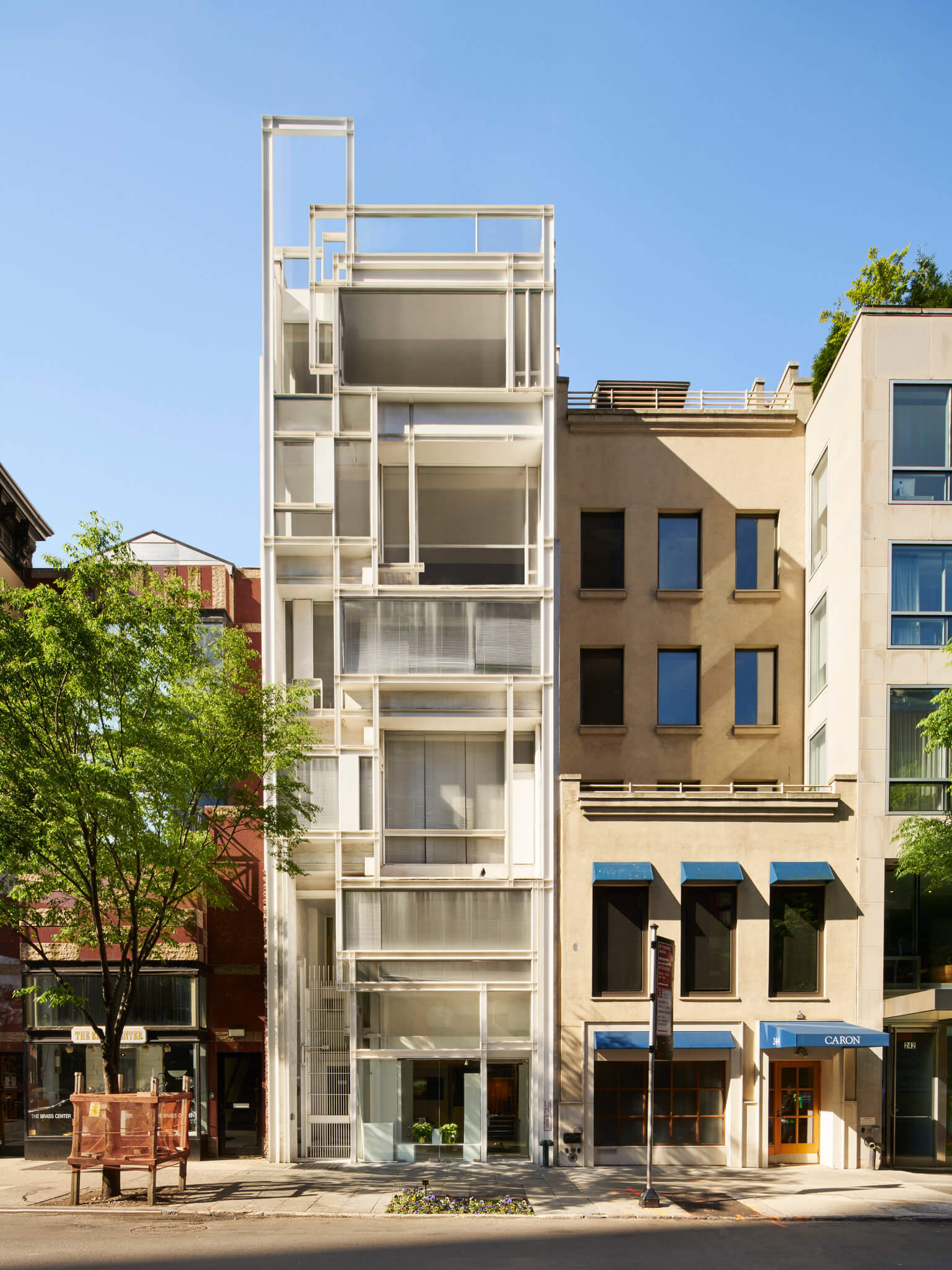After several Modernist buildings by Paul Rudolph have fallen to the wrecking ball or been substantially altered, 2023 is ending with one of the last buildings he designed gaining protection as a public landmark.
The New York City Landmarks Preservation Commission (LPC) on Tuesday voted unanimously to designate Rudolph’s Modulightor Building an individual city landmark. The commission also voted to designate a one-story structure by Ulrich Franzen: the Barkin, Levin & Company Office Pavilion in Long Island City. The designations protect both buildings from changes to their exteriors, including demolition. Any proposed changes will have to be reviewed and approved by LPC before the city issues a construction permit.
Located at 246 East 58th Street in Manhattan, the Modulightor Building is one of just a few structures Rudolph designed in Manhattan, where he moved at the height of his career in the mid-1960s. A six-story, multi-purpose structure that replaced a row house dating from the 1860s, it takes its name from an architectural lighting company that Rudolph founded in 1976 with Ernst Wagner, featuring customizable light fixtures and systems.
The Modulightor Building is the only publicly accessible structure in New York designed by Rudolph, who died in 1997. Constructed in two phases starting in 1989, it contains a ground floor commercial space that serves as a showroom for Modulightor. Its upper levels are occupied by the Paul Rudolph Institute for Modern Architecture. Other Rudolph-designed buildings in Manhattan are 23 Beekman Place, where Rudolph lived for many years, and the Halston house at 101 East 63rd Street, a private residence owned by designer Tom Ford—both already designated as landmarks.

The lower four floors of the Modulightor Building were designed by Rudolph and completed in 1993, four years before his death in 1997. The upper two floors and a roof deck were added by architect Mark Squeo between 2010 and 2016, using Rudolph’s preliminary drawings for a six-story structure on the site.
In recent years, several of the Rudolph’s buildings have been demolished or significantly altered. The list includes Burroughs Wellcome headquarters in North Carolina and his Shoreline Apartments in Buffalo, New York.
This week’s LPC designation and possible landmark designation in Boston of Rudolph’s 12-story Blue Cross/Blue Shield Building at 133 Federal Street come as more positive developments to those who admire his work. At the request of the building’s owner, commissioners agreed to extend the public comment period to December 27 before taking action.
“This is a great designation partly because there are fewer and fewer Rudolph buildings around and he’s an undeniably important mid-century-and-later architect in the U. S.,” said LPC commission vice chair Frederick Bland.
“During his lifetime, Rudolph wished our residence at 23 Beekman Place would become a study and resource center for the architectural community,” Wagner said in a statement. “When that didn’t happen, I promised him that I’d use the Modulightor building to fulfill his wish and then created the Paul Rudolph Institute for Modern Architecture. It is fitting that the Modulightor building – designed by and dedicated to Paul Rudolph – will be preserved as a living example of his genius. Thank you to the Landmarks Preservation Commission for ensuring future generations will get to experience and learn from his work.”

LPC’s hearing on December 19 also designated the Barkin Levin Company Office Pavilion in Long Island City, one of the first projects Ulrich Franzen completed after starting his own office. Constructed in 1957 and 1958 as part of a factory complex in Queens, it was described by the landmarks commission as “a distinguished example of mid-20th century commercial architecture, a graceful minimalist building set on a small, landscaped parcel of land and enclosed by low brick walls, concrete walkways, and grass lawns.”
“It’s no coincidence that you brought them both together because they’re of the same period and these two architects were in fact contemporaries and knew each other,” said LPC commissioner Jean Lutfy of the two buildings. “The other interesting thing is that both of these projects are aberrations from their Brutalist style, so they’re a little more refined and they’re definitely more an expression of what was going on at this particular time….I think we’re so fortunate to sort of capture them and preserve them and recognize them, and I’m so happy to be part of that process.”











